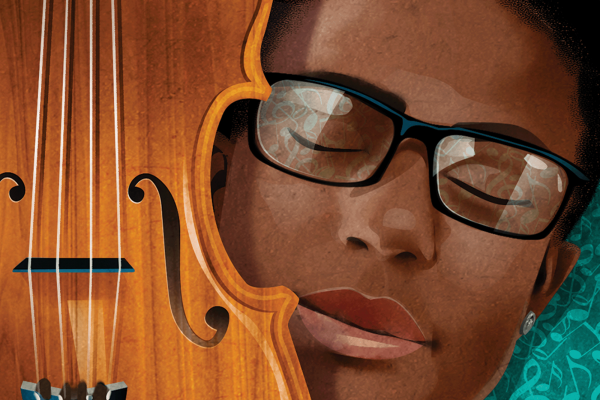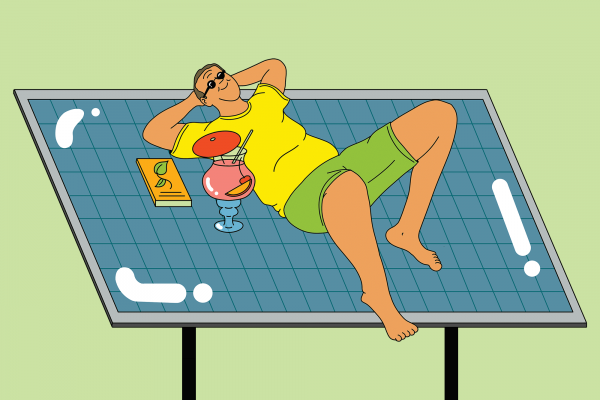Compassion. Curiosity. Courage. To author Talia Carner, a writer needs these three qualities to tell a good story — and they are on full display in Carner’s latest historical novel, The Third Daughter. Based on “The Man from Buenos Aires,” and the tales of Tevye the Dairyman and his daughters by Yiddish writer Sholem Aleichem, the book tells the story of the hundreds of Jewish girls from Eastern Europe who were trafficked by the Jewish pimps union, Zwi Migdal, and brought to Argentina and Brazil in the late 19th and early 20th century.
“It's the compassion, obviously, for the victims, to understand and see the humanity of this person who is a victim rather than a wanton woman, and the curiosity to learn more about what happened,” Carner says. “… And, of course, the courage … to go into it when you need to go into a ‘dark alley’ and you don't know what you're going to find.”
The Third Daughter has many “dark alleys,” starting with the protagonist, Batya’s family fleeing a pogrom in 19th century Russia. The first chapters of the book are full of menace and dread, featuring tales of grinding poverty, oppression, and the knowledge that this family’s suffering is about to become compounded. Batya is noticed by an “elegant stranger,” Reb Moskowitz, who is visiting from Buenos Aires and asks Batya’s father for her hand in marriage. Because she’s only 14, the family expects a long engagement, but ultimately agree to let Moskowitz take Batya to Argentina to learn how to be a proper wife while in the care of his sister. The first night, Moskowitz rapes Batya.
The next few chapters tell the story of Batya’s “initiation” into her new life in Buenos Aires, contemplating suicide and trying to hold onto her faith. At many points, I thought I would not be able to keep reading, but Carner compassionately and courageously enters this darkness with Batya and deftly leads the reader through the story.
When I asked Carner about her writing process, she said “the way characters come to me, they are pretty fully formed, and then I just crawl under the skin of the protagonist and discover these events as she goes through them. I get into the situation with the protagonist, with her point of view, and then get to feel what she feels, see what she sees, smell what she smells, and hear, of course, what she hears.”
Carner’s deep empathy with her characters also extends to Moskowitz, Batya’s kidnapper and pimp. Drawn from Aleichem’s “The Man from Buenos Aires,” Moskowitz believes that he’s actually doing these women a favor by giving them work, food, and safety. He is a complicated character and there to represent the thousands of Jewish pimps like him. Yet Carner humanizes Moskowitz in such a way that makes his villainy much worse. He’s a villain, but he’s also a man who craves respectability and adheres to his Jewish faith.
---
The trafficking and sexual enslavement of Jewish girls — largely underage girls — in Buenos Aires was extremely prevalent and went on from the early 1870s until 1939. Pimps in Zwi Migdal would travel back to the shtetls in their native countries, well-dressed and appearing successful, and convince families to sign over their daughters with promises of marriage or jobs in America. The Jewish population of Eastern Europe, ravaged by centuries of official persecution, systemic poverty, and violent pogroms were easy targets. According to Carner, “pimping in Argentina was so culturally associated with Jews that the name for a pimp in Spanish, caftan, was borrowed from the word for the long black coat worn by Orthodox Jewish men.”
The characters’ Jewish identity and faith is ever-present, informing their actions and coloring their responses.
“At no point does [Batya] say, ‘OK, there is no God.’ … No, it's always there with that Jewish feeling and Jewish identity,” Carner said. ‘... And that was true historically for those girls.”
It was also true that the Jewish community in Buenos Aires not did not accept the enslaved girls into their synagogues. Many erroneously viewed the girls’ occupation as a choice and blamed the pimps for the anti-Semitism they faced. The enslaved girls who died by suicide or as a result of beatings, rapes, and torture at the hands of their captors were not even permitted burial in a Jewish cemetery. In both Buenos Aires and in Rio de Janeiro, the girls had to establish their own cemeteries for their “sisters.”
--
The official policy of persecution in Russia and Eastern Europe in the 19 th and early 20th centuries restricted the type of work that Jewish people could undertake and whether they could own land. It is not hard to see how that systemic oppression would drive the pimps in Zwi Migdal to enter that line of work, nor to see how families could sign their daughters away, to the promise of a better life. Unfortunately it’s a story that is still being played out now, all around the world.
As an economist by background, much of Carner’s writing is informed by the numbers — and in our interview she pointed to the economics behind sex trafficking.
“We have supply, suppliers, and demand,” Carner said. “The supply is enormous and probably inexhaustible as long as there's strife, poverty, war around the globe, and as long as America is such a beacon of hope that people are willing to take the risk to come here to escape that horrible situation. … The payoff [for traffickers] is enormous, while the risks are very low, because when they get caught, the punishment is nowhere near the profits.”
And according to Carner, the demand side should share more of the consequences, and her hope is that her activism — and that of so many other groups — will help humanize the victims of sex trafficking and thus deter abusers from buying services. Like Batya, many of the women and girls who are being trafficked right now (though there are young boys and trans women who are also trafficked, women and girls make up the majority) are being forced into prostitution. Back home, many of those women’s families face violence and danger if they do not comply with their traffickers.
The trafficking and enslavement of women and girls, both then and now, is a desecration of God’s image. The Third Daughter not only humanizes Batya and the other girls, but challenges us to see the image of God in each of their stories. The result is a page-turner that will leave you so connected with Batya and her “sisters” that they will stay with you long after you are done.
Got something to say about what you're reading? We value your feedback!







